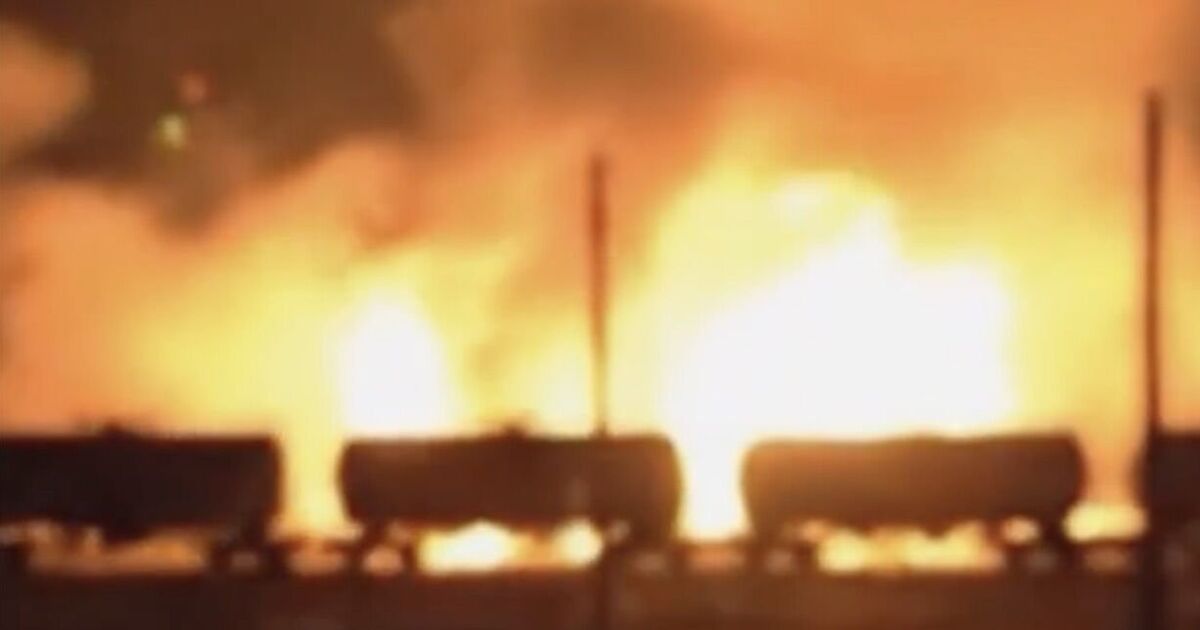A “massive” Ukrainian drone strike hit deep inside Russian territory overnight, targeting the Archeda railway station in the town of Frolovo, located in Russia’s Volgograd Oblast. The attack apparently caused substantial disruption to rail travel and led to the temporary closure of a regional airport, with a dramatic clip shared by former Ukrainian interior ministry adviser Anton Geraschenko showing flames leaping high into the sky.
Volgograd Oblast sits about 430 miles (900 kilometres) southeast of Moscow and roughly 75 miles (120 kilometres) east of the Ukrainian border, adjacent to Luhansk Oblast in eastern Ukraine. The strike in Frolovo, described by regional Governor Andrei Bocharov as “massive,” reportedly involved drones targeting both transportation and energy infrastructure. A fire erupted at the Archeda railway station, according to reports from the independent media outlet Astra, severely damaging the facility.
Bocharov confirmed that rail traffic in the Frolovo district has been restricted due to the damage.
Russian Railways, the state-owned company responsible for the nation’s train network, announced a suspension of services in the affected area, adding to travel chaos and logistical disruptions across the region.
The strike underscores Ukraine’s growing capability and willingness to hit key infrastructure far behind Russia’s frontlines, raising security concerns for Russian officials.
The Russian Defence Ministry claimed that 61 Ukrainian drones were shot down over multiple regions in Russia overnight, suggesting a large-scale coordinated attack.
However, independent verification of these claims remains difficult, and Ukrainian officials seldom comment directly on cross-border drone strikes, maintaining operational secrecy.
Nevertheless, Ukraine has been regularly targeting Russian military, transport, and energy assets, including rail hubs, fuel depots, and ammunition storage facilities.
The attack on Frolovo follows a string of similar strikes in recent weeks targeting Russian logistics and industrial centres. Just days earlier, on July 29, Ukrainian drones struck a railway station in Salsk, Rostov Oblast, causing a major fire.
Rostov is another critical transport hub not far from the Ukrainian border, underscoring the strategic nature of Ukraine’s drone campaign aimed at crippling Russia’s supply lines.
Further west, a series of drone strikes on August 2 targeted industrial sites in Russia’s Ryazan, Penza, Samara, and Voronezh oblasts.
In Ryazan, an oil refinery caught fire, and videos circulating on social media showed a massive pillar of flame. Ryazan Governor Pavel Malkov reported debris from a drone falling on an enterprise site, and emergency crews worked to contain the damage.
In Penza, the Elektropribor plant was hit by what Russian Telegram channels described as five explosions, although local officials have remained silent on the incident.
Meanwhile, in Samara Oblast, the Novokuibyshevsky oil refinery was reportedly set ablaze after a drone strike, with videos of flames spreading shared online. Samara is an important industrial city along the Volga River, making such strikes a serious blow to Russia’s energy infrastructure.
These repeated drone and missile strikes reveal a calculated Ukrainian effort to disrupt Russian military logistics and industrial production deep inside Russia and in occupied territories.

